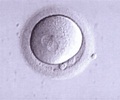Researcher says the addition of a genetic sonogram maximizes the accuracy of non-invasive testing for Down syndrome
A Baylor College of Medicine researcher who was lead author of a landmark study in the current issue of Obstetrics and Gynecology has said that the addition of a "genetic sonogram" maximizes the accuracy of non-invasive testing for Down syndrome.
"We wanted to be able to definitively describe the detection and accuracy of noninvasive prenatal screening for the detection of Down syndrome," said Dr. Kjersti Aagaard, assistant professor of obstetrics and gynecology at BCM and the corresponding author of the report. "Using our data generated in the most comprehensive study performed to date (the FaSTER trial), we demonstrated that the addition of a genetic sonogram to all modes of screening in pregnancy allows for optimal noninvasive prenatal detection of Down syndrome." (FaSTER stands for First and Second Trimester Evaluation of Risk.)Noninvasive screening for Down syndrome (as well as the other major fetal genetic or chromosomal abnormalities in the developing baby) involves a specific early ultrasound and series of tests for biochemicals in the mother's blood at particular times during pregnancy. Depending on the institution and clinic, tests are done during the first and/or second trimesters of pregnancy. Optimally, noninvasive screening also includes that a preliminary ultrasound to detect nuchal translucency takes place late in the first trimester. The test measures the clear or translucent space in the tissue at the back of the fetus' neck. If there is an abnormality, fluid will accumulate in the back of the neck making the nuchal fold area larger.
In the first trimester, measured maternal serum markers include pregnancy-associated plasma protein A (PAPP-A) and free beta human chorionic gonadotropin (beta hCG). In the second trimester, physicians measure alpha-fetoprotein, beta hCG, unconjugated estriol and inhibin A. The tests ordered and the combinations vary among institutions and clinics. Often, these tests are used as a basis for counseling women on the option of the more invasive but definitive tests such as amniocentesis, which involves directly measuring the chromosomal material in fetal cells found in the fluid inside the uterus, and chorionic villus sampling, an earlier means of obtaining fetal cells from tissue found in the placenta. Each is the definitive means of testing for genetic or chromosomal disorders that affect the fetus.
However, each of these invasive tests carries risk for potential complications, and many pregnant women seek to avoid those risks if at all possible. Because of this, researchers have spent several decades optimizing non-invasive prenatal diagnostic screening. One major component of this screening program has come to include the 'genetic sonogram'. A genetic sonogram is simply a sophisticated ultrasound that details the fetal anatomy in the second trimester, looking for the presence of major fetal anomalies or specific anatomic features (so-called 'soft markers') that might be found in a child with Down syndrome, said Aagaard.
"Because we build off of the FaSTER trial, our reported adjusted risk measures we describe in this manuscript serve as definitive evidence that the sonogram improves the sensitivity of detection (making it less likely that a Down syndrome diagnosis would be missed) and also decreases the false positive rate," said Aagaard. "Combining this with first or first and second trimester screening for biochemical markers gives us the maximal capacity to detect Down syndrome in a noninvasive fashion."
Aagaard and her colleagues screened over 8,000 of the nearly 39,000 pregnant women who took part in the FaSTER trial of screening for chromosomal abnormalities (aneuploidy). The detection rate of Down syndrome babies varied from 69 percent for the genetic sonogram alone to as high as 98 percent with certain combinations of the biochemical markers. More importantly, the improved detection rate was accompanied by a decrease in the screening tests false positive rates (or falsely reported risk of Downs syndrome in a normal pregnancy).
Advertisement
RAS











